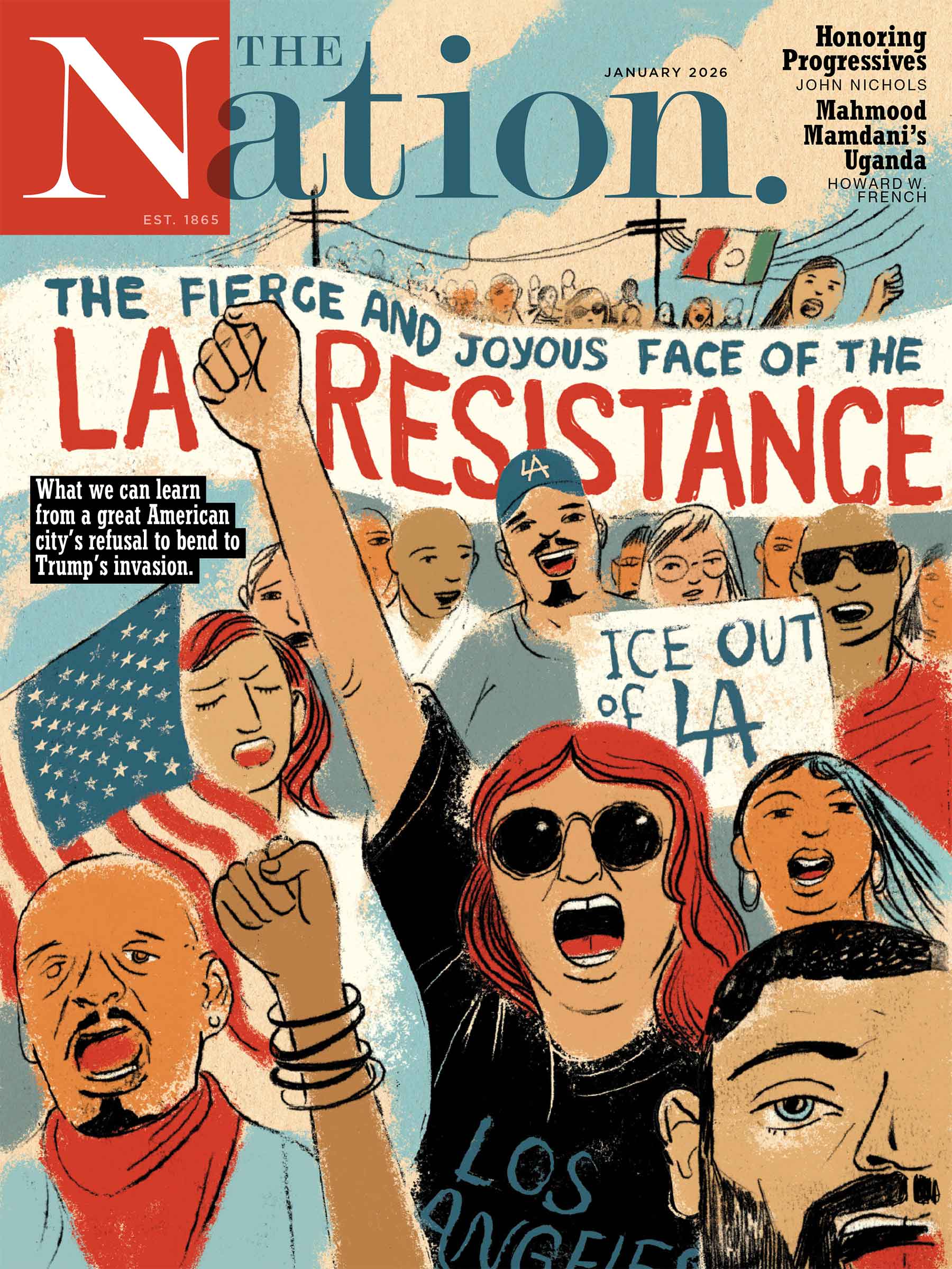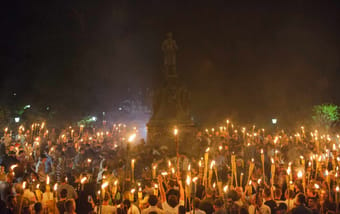On March 22, a few hundred peaceful antiwar protesters in Seattle who had gathered around the Federal Building suddenly found themselves being swept down streets by officers in riot gear and then corralled onto the sidewalk. As hundreds of officers encircled and trapped them, snipers were spotted on rooftops and cops formed riot lines, holding rubber bullet guns and M-16s. Injuries inflicted on the demonstrators ranged from head wounds to taser burns. So far, the public defender’s office has received around 200 complaints about police misconduct, brutality and illegal arrests.
It’s all part of an alarming trend that has emerged in the policing of antiwar and social justice demonstrations. The problem seems particularly acute in Seattle, which jumped into international headlines in 1999 when the downtown area became a temporary battlefield during global justice protests at the WTO Ministerial Conference. Since then, the use of militaristic tactics by police has become common. At the 2000 Democratic National Convention in Los Angeles, police fired rubber bullets and tear gas even at those complying with dispersal orders; and at IMF protests in Washington last year some 650 people were arrested and police were accused of brutality toward those detained.
Back in Seattle, nearly four years after the WTO demonstrations, the city has still not fully recovered. If recent antiwar events are any indication, little if anything seems to have been learned. Among those arrested in Seattle on March 22 was public defender Lisa Daugaard, who was handing out information to protesters about a hotline to report police abuses. “This is a public sidewalk,” Daugaard responded to an officer who told her to leave immediately. “Not today it’s not,” the officer is alleged to have responded. Daugaard was arrested and spent the next six hours in jail, where, she reports, officers made fun of protesters with injuries and berated them for being opposed to the war. “These are the kinds of things we never used to see in Seattle before,” says Daugaard.
Elsewhere, the New York Police Department seemed to approach the February 15 demonstration as if it were a military “containment and control” operation. Police herded people and then blocked them from exiting, resulting in numerous arrests. Videotapes showed police backing horses into demonstrators, pushing people into metal barricades, pepper-spraying demonstrators and raising nightsticks against penned-in protesters. In late March in Washington, DC, the ACLU filed a federal lawsuit charging police with violating the constitutional rights of more than 400 peaceful demonstrators and “sweeping” citizens (including nonprotesters) into enclosed spaces and then arresting them. In Oakland on April 7, police fired on roughly 500 antiwar protesters with wooden bullets, causing face and body injuries to several activists and working longshoremen who had nothing to do with the protest.
The militarization of law enforcement is a national trend, says Seattle attorney Paul Richmond, who produced Urban Warrior, a new documentary film that examines the blurring of boundaries between military tactics and civilian law enforcement. According to Peter Kraska, editor of Militarizing the American Criminal Justice System, nearly 90 percent of American police departments serving cities with 50,000-plus residents have paramilitary units. A 1999 Cato Institute study of the growth of paramilitarism in American police departments noted that the Pentagon has been equipping those units with M-16s, armed personnel carriers and grenade launchers, and that such units regularly conduct training exercises with Army Rangers and Navy SEALs. Richmond likens the use of military weaponry and police tactics in Seattle to a kind of “market test” of new crowd-control tactics, weapons and even chemical agents that were once used only in combat situations.
Richmond argues that paramilitary police units already appear to have carte blanche to use any and all means to quash dissent. “As long as weapons and tactics like these are in use,” he adds, “the civilian population is being viewed as the enemy. Unfortunately, it seems like an indication of what’s to come.”


